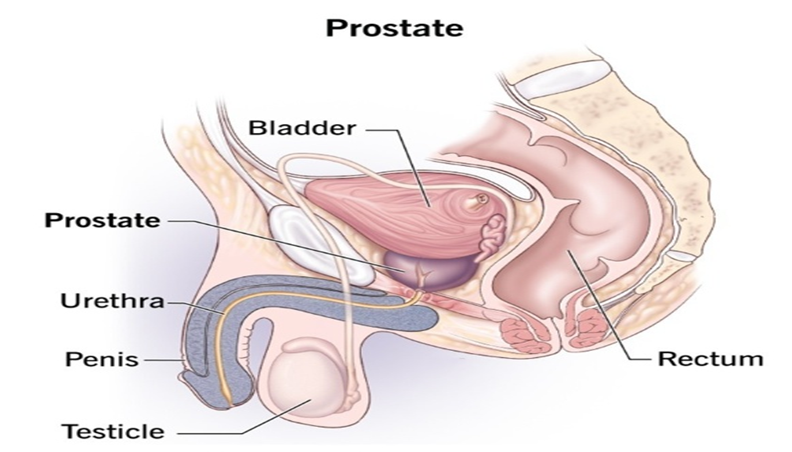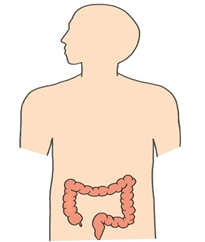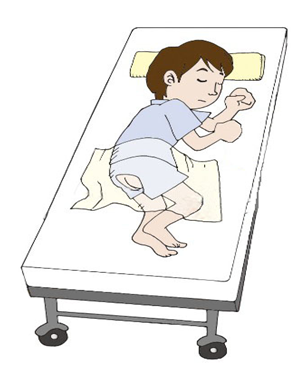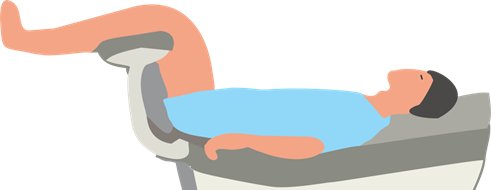- The purposes of ultrasound-guided prostate
biopsy are to confirm the diagnosis, assess treatment efficacy, and evaluate
disease progression.
- Prostate biopsy can be performed via transrectal
or perineal approaches.
- Post-procedural care following ultrasound-guided prostate biopsy includes monitoring for hematuria, abstaining from sexual activity for two weeks, and avoiding heavy lifting for one month.
According to the 2021 statistics from the Ministry of Health and Welfare, prostate cancer ranks fifth among the top ten leading causes of death in men in Taiwan. Early diagnosis and various effective treatments can increase the five-year survival rate of prostate cancer to approximately 75%.
The prostate is a glandular organ that resembles a chestnut in shape, weightss about 20 grams, and secretes prostate fluid, which is a component of semen. It is located below the bladder, surrounding part of the urethra, and is separated from the rectum by a fascial layer (Figure 1).

II.Why Undergo Ultrasound-Guided Prostate Biopsy
Early-stage prostate cancer typically presents without symptoms. Currently, diagnosis involves a physician performing a digital rectal examination (DRE) and measuring blood levels of prostate-specific antigen (PSA). Additionally, depending on the clinical situation, the physician may consider newer diagnostic tests such as the Prostate Health Index (PHI) or magnetic resonance imaging (MRI) at the patient's expense. Based on the combined results of these examinations, a prostate biopsy under ultrasound guidance is performed to confirm the pathological diagnosis, Purpose:
- To differentiate between various prostate
pathologies.
- To stage and diagnose prostate carcinoma.
- To evaluate the therapeutic efficacy of radiation or hormone therapy in prostate cancer management.
- To actively monitor the progression of untreated prostate carcinoma.
III.Examination Methods
The physician conducts an ultrasound scan by inserting a lubricated transducer probe either into the perineal area or 2-4 centimeters into the rectum. When required, a prostate biopsy is performed under ultrasound guidance. For MRI-ultrasound fusion-guided biopsy, pre-acquired MRI images are fused with real-time ultrasound images to accurately plan and target the biopsy sites. The entire procedure typically takes approximately 30-60 minutes.
- Examination Methods
- Transrectal Ultrasound-Guided Prostate Biopsy (TRUS).
- Transperineal Ultrasound-Guided Prostate Biopsy.
- MRI-Ultrasound Fusion-Guided Prostate Biopsy.

- Complete the ultrasound-guided prostate biopsy information and consent form, as well as the surgical and anesthesia consent forms.

- Administer prophylactic antibiotics as prescribed by the physician.


- The nurse administers a
morning enema per the physician's
instructions to ensure thorough bowel preparation.


- For MRI-ultrasound fusion-guided biopsy, a
magnetic resonance imaging (MRI) scan must be performed beforehand.

- The examination and positioning method will be selected based on the physician's clinical evaluation. The following two approaches are available:




















IV.Conclusion
Patients undergo a digital rectal examination (DRE) and measurement of prostate-specific antigen (PSA) levels in the blood during outpatient visits. Combined with other assessments such as the Prostate Health Index (PHI) or magnetic resonance imaging (MRI), if abnormalities are detected, the physician will evaluate and schedule an ultrasound-guided prostate biopsy to confirm the pathological diagnosis. This assists the physician in clinical judgment and planning subsequent treatment.
VI.References
- 王賢祥(2021,12月29日)‧攝護腺癌診斷的利器-經直腸超音波攝護腺切片‧https://www.vghtc.gov.tw/UnitPage/RowViewDetail?WebRowsID=176cc78e-2607-49e9-b035-4b7bb4a6855c&UnitID=2f81d066-ff96-4b9d-a0e8-87e1ac169840&CompanyID=e8e0488e-54a0-44bf-b10c-d029c423f6e7&UnitDefaultTemplate=1
- 廖博崎(2021年12月20日)‧磁振造影融合影像機械手臂超音波引導經會陰攝護腺切片‧中榮醫訊月刊,285,20-21。
- EAU guideline(2022).Prostate cancer. https://uroweb.org/guideline/prostate-cancer/
- Ortner, G., Tzanaki, E., Rai, B. P., Nagele, U., & Tokas, T. (2021). Transperineal prostate biopsy: The modern gold standard to prostate cancer diagnosis. Turkish Journal of Urology, 47(Supp. 1), S19-S26. https://doi.org/10.5152/tud.2020.20358
- 位置
-
- 資料夾名稱
- English
- 上傳者
- 紀妍菲
- 單位
- 中榮護理衛教
- 英文名稱
- Information on Ultrasound-Guided Prostate Biopsy
- 分類
- 檢查
- 科別
- 英語
- 癌症照護
- 否
- 建立
- 2024-06-21 12:43:32
- 最近修訂
- 2024-08-30 20:37:26